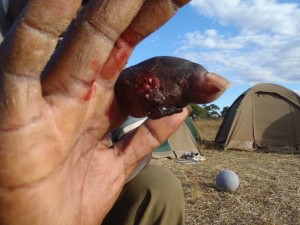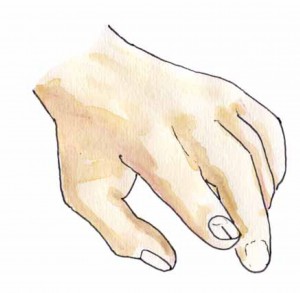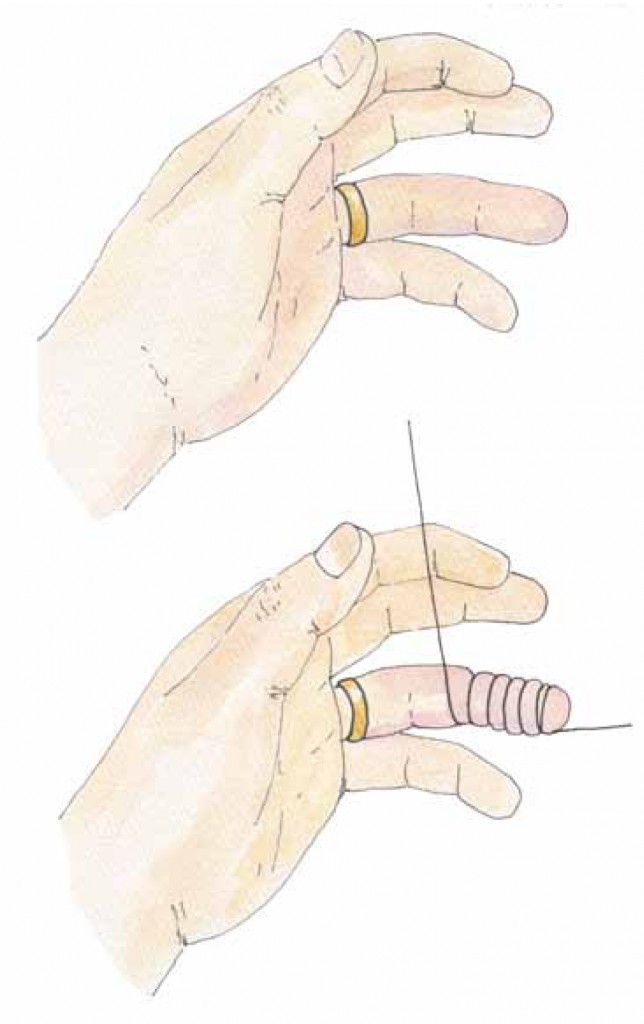Wilderness Treatment of Severe Infection: a First Hand Account

May/June 2012 ISSN-1059-6518 Volume 25 Number 3
While I was recently back in Zambia at Overland Missions teaching another Missionary Wilderness First Responder course as part of the Advanced Missions Training course that they do twice a year. I caught up with Mariel and after many hugs she told me this story and showed me the bone fragments from his finger, which she had saved for me to examine. I asked her to please write down this marvelous event, so we could share it with our readers.
Mariel is a staff member and one of the expedition leaders for Overland Missions based at Rapid 14 on the Zambezi River in the village of Nsongwe, Zambia. She is a great example of why we do what we do at SOLO. She recognized a life-threatening infection and applied the skills that she had been taught in her Missionary Wilderness First Responder course that she had taken at the Overland Missions base in Nsongwe the previous year. She saved his life and I am sure she will see him again on her return trip.
Frank Hubbell, DO Medical Editor Wilderness Medicine NewsletterThe Path to Peter
by Mariel Brantley
Winter in Africa will always take you by surprise. Your mind has to slightly bend to equate cold and Africa in the same realm. However, no matter how long it takes you to catch up with the paradoxical weather, it doesn’t change the fact that come morning, you will struggle to get your blood flowing again because of the cold. It was day two of our expedition. We hit the dirt path at 9am and had no plan of returning until we found what we were looking for. Equipped with a team of five and one translator, we were searching for the unreached. We pushed ourselves to go faster, further, and harder than the day before. I knew we were finally meeting our goal when we found ourselves on the far side of the hills, delicately dangled in the balance of a broken log and four slippery stones while crossing one of the river beds.
If I had any doubt in my mind if I was awake, it definitely went away as we walked into the first village. As I stood there looking at the villagers, it was as though my sense of smell overpowered my sight. I immediately knew something was wrong. After all, the scent of decaying flesh is unmistakable. Before I could get the words out, I was already making my way toward a man standing in the back. I said, “Who is hurt here? Someone is sick. You sir, what is wrong?” The man looked up at me with the look of shame and fear. I approached him and saw a dirty, tattered strip of cloth covering his finger and asked him to remove it. He slowly removed the cloth to reveal an extremely swollen and infected finger. I asked his name and what had happened. The man said his name was Peter, then explained he had been in a fight and was bitten by the man who attacked him. He said that it had happened about two months prior. My eyes darted across every detail I could absorb like one of those rapid freeze frame shots you see in a movie. I observed the wound and could clearly identify the track mark of the  infection trailing all the way up his arm, past his elbow and to the middle of his bicep. Severe infection + closed wound + clear track line + raised body temperature = serious trouble. I looked up at him with a sense of urgency and said, “Sir, please, you must come with us to our camp.”
infection trailing all the way up his arm, past his elbow and to the middle of his bicep. Severe infection + closed wound + clear track line + raised body temperature = serious trouble. I looked up at him with a sense of urgency and said, “Sir, please, you must come with us to our camp.”


